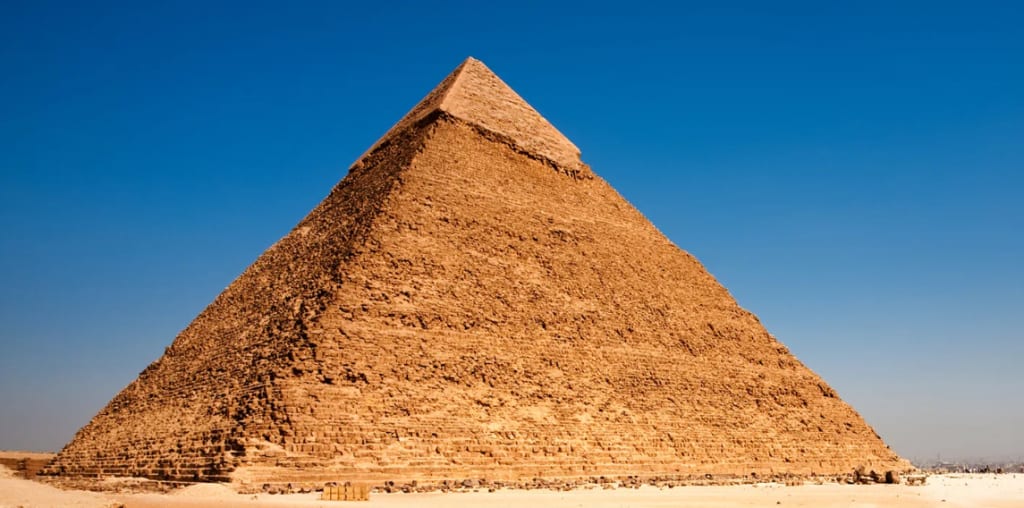Why So Many Different Civilizations Built Pyramids
Unraveling the Pyramid Phenomenon: Diverse Civilizations, Shared Mysteries

Sure, here's a rewritten version of the text about pyramids around the world, expanded to at least 600 words:
---
**Unveiling the Enigma of Pyramids: Architectural Marvels Across Continents**
Pyramids, those ancient wonders that defy time and baffle modern scholars, are scattered across the globe, from the arid lands of Egypt to the lush jungles of Central America. Each of these monumental structures tells a story of human ingenuity, cultural sophistication, and the quest for divine connection.
Let's begin our journey with a visit to the Pyramid of the Sun in Mexico. This remarkable structure stands as a testament to the advanced urban planning of its builders, the Teotihuacanos. Erected around 100 CE, it towers 216 feet above the ground, dominating the landscape of Teotihuacan's expansive urban center. Nestled on the eastern side of the Avenue of the Dead, the Pyramid of the Sun was not merely a symbol of power but also a religious center, possibly crowned with a temple that served as a conduit between earthly and celestial realms. The construction of this colossal pyramid required approximately 1 million cubic yards of material, including the distinctive red volcanic rock known as tezontle, meticulously quarried and transported to the site. In recent archaeological explorations, hidden chambers and tunnels beneath the pyramid have revealed ancient artifacts, offering glimpses into the spiritual and ceremonial life of the Teotihuacan people.
From Mexico, our exploration takes us to Sudan, where the Nubian pyramids await discovery. Often overshadowed by their Egyptian counterparts, these pyramids are no less intriguing. Spread across the ancient kingdom of Kush, they served as the final resting places for Nubian royalty, who ruled over a vast territory extending from Nubia to the Mediterranean. Constructed predominantly using granite and reddish sandstone, these pyramids are characterized by their steep angles and smaller scale compared to those in Egypt. The Meroitic pyramids at Meroë, in particular, provide a vivid snapshot of Nubian architectural prowess and their cultural ties with ancient Egypt and beyond.
Turning our gaze towards Iraq, we encounter a different kind of pyramid—the ziggurat. These stepped temples, distinctively tiered and adorned with terraces, were focal points of religious and administrative life in ancient Mesopotamia. Among the most notable is the Ziggurat of Ur, dedicated to the moon deity Nanna by the Sumerian king Ur-Nammu around 2100 BCE. Rising impressively between 70 to 100 feet, with three levels of terraces culminating in a temple sanctuary at the summit, the Ziggurat of Ur stands as a testament to the architectural and engineering prowess of the Sumerians. Built from sun-dried bricks and adorned with blue glazed bricks, this monumental structure once dominated the Mesopotamian landscape, symbolizing both earthly power and spiritual connection.
What is most striking about pyramids worldwide is their cultural diversity in design and purpose, despite sharing a common architectural form. Egyptian pyramids, with their smooth, angled sides and pointed apex, were conceived as gateways to the afterlife, facilitating the ascent of the pharaoh's soul to the heavens. In contrast, Mesoamerican pyramids, such as those built by the Maya and Aztecs, embraced a tiered, step-like design, symbolizing their cosmological beliefs and serving as platforms for ritualistic ceremonies and celestial observations.
The construction of these ancient marvels poses a profound mystery: how were they built with the limited technology available at the time? Unlike modern construction techniques, which rely on heavy machinery and advanced tools, pyramid builders in antiquity relied on human labor, ingenuity, and meticulous planning. The Great Pyramid of Giza, for instance, built during the reign of Pharaoh Khufu, required an estimated 20,000 skilled laborers over several decades to quarry, transport, and assemble its massive limestone blocks. The precision and alignment of these blocks, each weighing several tons, reflect a level of architectural sophistication that continues to astound researchers today.
Moreover, the cultural significance of pyramids transcends their structural grandeur. They served as focal points of religious worship, repositories of royal tombs, and symbols of political authority and divine connection. In Egypt, the pyramids were integral to the religious beliefs surrounding the afterlife and the divine kingship of the pharaohs. In Central America, the pyramids of the Maya and Aztecs were centers of astronomical observation and ritualistic practices, aligning with celestial events and cycles of agricultural importance.
In conclusion, pyramids stand as enduring symbols of human achievement, ingenuity, and cultural expression. From the colossal monuments of ancient Egypt to the stepped temples of Mesoamerica and the tiered ziggurats of Mesopotamia, these structures continue to captivate the imagination and inspire awe. They embody the aspirations of ancient civilizations to transcend the earthly realm, connect with the divine, and leave a lasting legacy for future generations to unravel and admire.
As we reflect on their significance, let us marvel at the timeless allure of pyramids, testaments to the indomitable spirit of human creativity and perseverance across millennia.
About the Creator
Enjoyed the story? Support the Creator.
Subscribe for free to receive all their stories in your feed. You could also pledge your support or give them a one-off tip, letting them know you appreciate their work.





Comments
There are no comments for this story
Be the first to respond and start the conversation.